Beauty is one of those necessities of modern society. Certainly here in the District of Columbia, nature itself can provide beauty with springtime cherry blossoms or autumn leaves, and we have many, many old public buildings with intriguing and beautiful architecture. Modern architecture, though, tends to be rather more spare, streamlined, boring, or even downright ugly. Recognizing this and the need of the soul for beauty, especially in urban settings, Congress has enacted laws requiring a certain percentage of building construction and remodeling costs be dedicated to art.
In these days of ever-expanding defense and security spending, a lot of the art budget is being squeezed out in public buildings. Since the need of the people for beauty still exists, the private sector seems to be stepping up their efforts to fill in the void. Art is not something to be reserved solely to the wealthy.
One of the examples of this private sector public art is a sculpture I pass several times a week as I walk to and from Georgetown. The Four Seasons Hotel has a large bronze sculpture between their entry drive and the sidewalk that is both striking and fascinating.
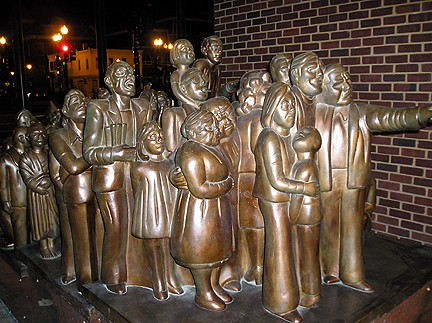 Illuminated Crowd
Illuminated Crowd is a contemporary resin sculpture by British expatriot Raymond Mason (1922— ) which was installed in large scale in Montreal in 1985 outside the Banque Nationale de Paris; the Four Seasons acquired the bronze smaller scale study for the large work in 2005.
It's a great piece. Most art stuck outside businesses and office buildings is pretty boring and nondescript, usually some token geometric form with no real substance to it. Mason's work, however, has prompted me to stop and look on several occasions. It has this interesting quality of evolving from order into chaos.
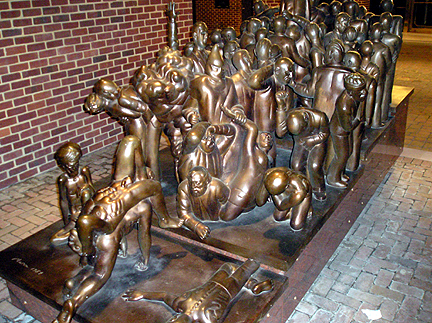
The front of the sculpture shows a rather orderly crowd looking very proper and goal oriented, then as one looks deeper and deeper into the crowd, the order degenerates into passion, violence, and basal instinct.
Raymond Mason is one of the artists of the postmodern school. He moved to Paris in the years following World War II and helped bridge the post-war artists to the earlier twentieth century modernist masters. His works all have an involving quality that compels the viewer to be a part of the crowd, to participate in the artistic experience. While his people in
Illuminated Crowd have a caricaturish quality to them, a wide range and variety of emotion is portrayed on the various faces.
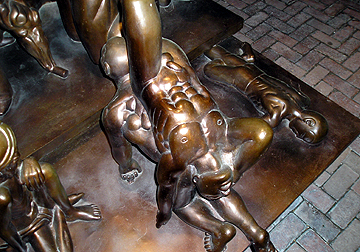
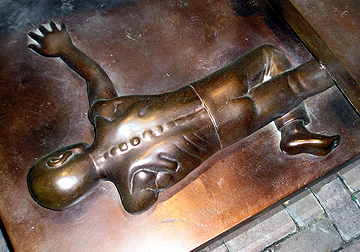
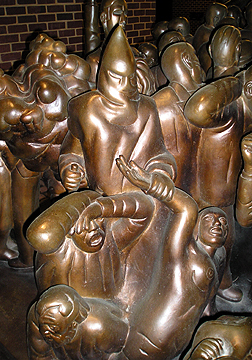
These detail shots show some of the miniscenes depicted in the overall work.
The artist says that the crowd is gathered and looking towards the light or fire, which represents ideals, then as the light penetrates less and less into the people, the mood becomes rowdy and violent, showing the fragile nature of man and the flow of emotions.
Certainly, this is an emotional and compelling work. The style reminds me a lot of the Latin American art featuring short, squat, stylized figures which has been rather popular of late. Mason has been around long enough, though, that I don't know whether he's working in the Latin American modern style or if they are working in his style.
The nice thing, though, is that this is a piece of modern art which is accessible and which can actually mean something different to each person who views and perceives the installation.
I thank the Four Seasons for placing the piece where all of us in the neighborhood can appreciate it.




 These detail shots show some of the miniscenes depicted in the overall work.
These detail shots show some of the miniscenes depicted in the overall work.